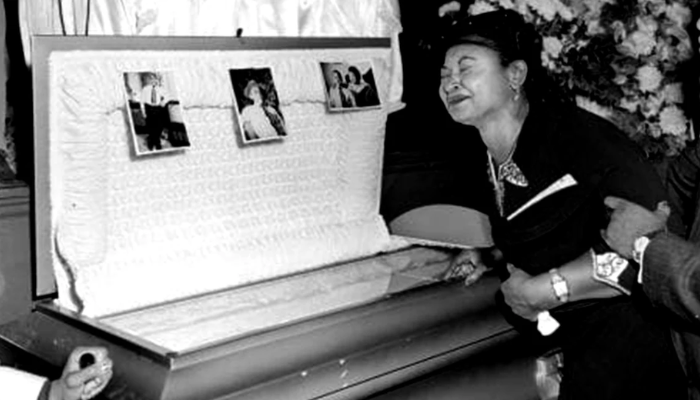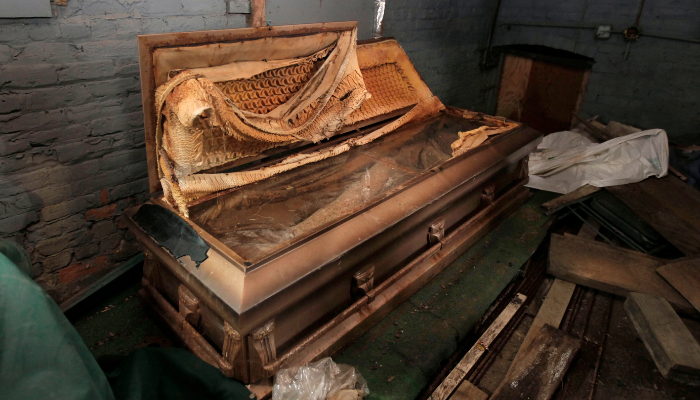The Emmett Till casket photo is one of the most haunting and powerful images in American history. When 14-year-old Emmett Till was brutally murdered in 1955, his mother, Mamie Till-Mobley, made the courageous decision to hold an open-casket funeral, allowing the world to see the extent of the racial violence he suffered. The photo of his disfigured body, published in Jet magazine, ignited national outrage and became a catalyst for the civil rights movement. This article explores the significance, historical context, and lasting impact of this powerful image.
The Tragic Story Behind Emmett Till’s Murder
Emmett Till, an African American teenager from Chicago, was visiting relatives in Mississippi when he was accused of whistling at a white woman, Carolyn Bryant. This accusation led to his abduction by Bryant’s husband, Roy Bryant,emmett till casket photo and his half-brother, J.W. Milam. They tortured and murdered Emmett, dumping his body in the Tallahatchie River.
When Till’s body was recovered, it was barely recognizable due to the brutal beating he endured. His killers were arrested but later acquitted by an all-white jury. The injustice of this verdict and the graphic evidence of his murder fueled widespread activism against racial discrimination.
The Role of Mamie Till-Mobley in Sharing the Casket Photo
Mamie Till-Mobley made a bold decision to leave Emmett’s casket open at his funeral, insisting, “I want the world to see what they did to my baby.” She believed that exposing the horrors of racial violence would force Americans to confront the reality of segregation and lynching.
The Emmett Till casket photo was published in Jet magazine and circulated widely, shocking the nation. Till-Mobley’s advocacy played a pivotal role in bringing attention to racial injustice and galvanizing the civil rights movement.
The Media’s Role in Amplifying the Image’s Impact
The media played a crucial role in amplifying the impact of the Emmett Till casket photo. Jet magazine’s decision to publish the image was unprecedented, as mainstream publications often avoided such explicit depictions of racial violence. The photo was later republished by The Chicago Defender and other Black-owned newspapers, ensuring its widespread distribution.
Television and radio broadcasts also covered the case, making it one of the first instances where racial violence was brought into American living rooms. This media exposure led to increased support for civil rights organizations such as the NAACP.
The Emmett Till Casket Photo’s Influence on the Civil Rights Movement

The Emmett Till casket photo became a rallying cry for the civil rights movement. Just a few months after its publication, Rosa Parks cited Emmett Till as her inspiration for refusing to give up her seat on a Montgomery bus, sparking the Montgomery Bus Boycott.
Civil rights leaders like Martin Luther King Jr. and Medgar Evers used Till’s story to highlight the need for change. The photo’s graphic nature forced many Americans to acknowledge the brutality of racial injustice, leading to increased activism and policy changes.
The Lasting Legacy of the Emmett Till Casket Photo
Decades later, the Emmett Till casket photo remains a symbol of racial injustice. In 2005, the FBI reopened the case, leading to new investigations into Till’s murder. His original casket is now displayed at the National Museum of African American History and Culture, serving as a poignant reminder of the struggle for civil rights.
The photo continues to be a powerful educational tool, teaching new generations about the impact of racism and the importance of activism. Its influence can be seen in modern movements like Black Lives Matter, which draw parallels between Till’s murder and contemporary racial violence.
Conclusion
The Emmett Till casket photo is more than just an image—it is a symbol of resilience, injustice, and the ongoing fight for civil rights. Mamie Till-Mobley’s brave decision to share the photo changed the course of history, forcing the nation to confront its deep-seated racism. As we reflect on its impact, we are reminded of the power of visual storytelling in driving social change. Emmett Till’s legacy endures, inspiring future generations to continue the fight for justice and equality.
FAQs
- Why was Emmett Till’s casket left open?
- Mamie Till-Mobley wanted the world to see the brutality of racial violence and injustice.
- Who took the Emmett Till casket photo?
- The photograph was taken by journalists and published in Jet magazine, bringing national attention to his murder.
- What impact did the Emmett Till casket photo have on the civil rights movement?
- It sparked widespread outrage, inspiring activism and pivotal events like the Montgomery Bus Boycott.
- Where is Emmett Till’s casket now?
- His original casket is preserved at the National Museum of African American History and Culture in Washington, D.C.
- Why was Emmett Till murdered?
- He was falsely accused of flirting with a white woman, which led to his brutal killing by white men in Mississippi.
- Were Emmett Till’s killers ever convicted?
- No,emmett till casket photo they were acquitted by an all-white jury but later admitted to the crime in a paid magazine interview.
- What role did the media play in Till’s case?
- Black-owned publications like Jet magazine ensured that the horrific details of Till’s murder reached a national audience.
- How did Mamie Till-Mobley continue to advocate for justice?
- She became a civil rights activist, speaking out against racial violence and working to educate the public.
- Is the Emmett Till casket photo still relevant today?
- Yes, it remains a powerful reminder of racial injustice and continues to inspire activism in modern civil rights movements.
- What lessons can we learn from Emmett Till’s story?
- His story teaches the importance of confronting injustice, standing up for human rights, and ensuring history is never forgotten.





